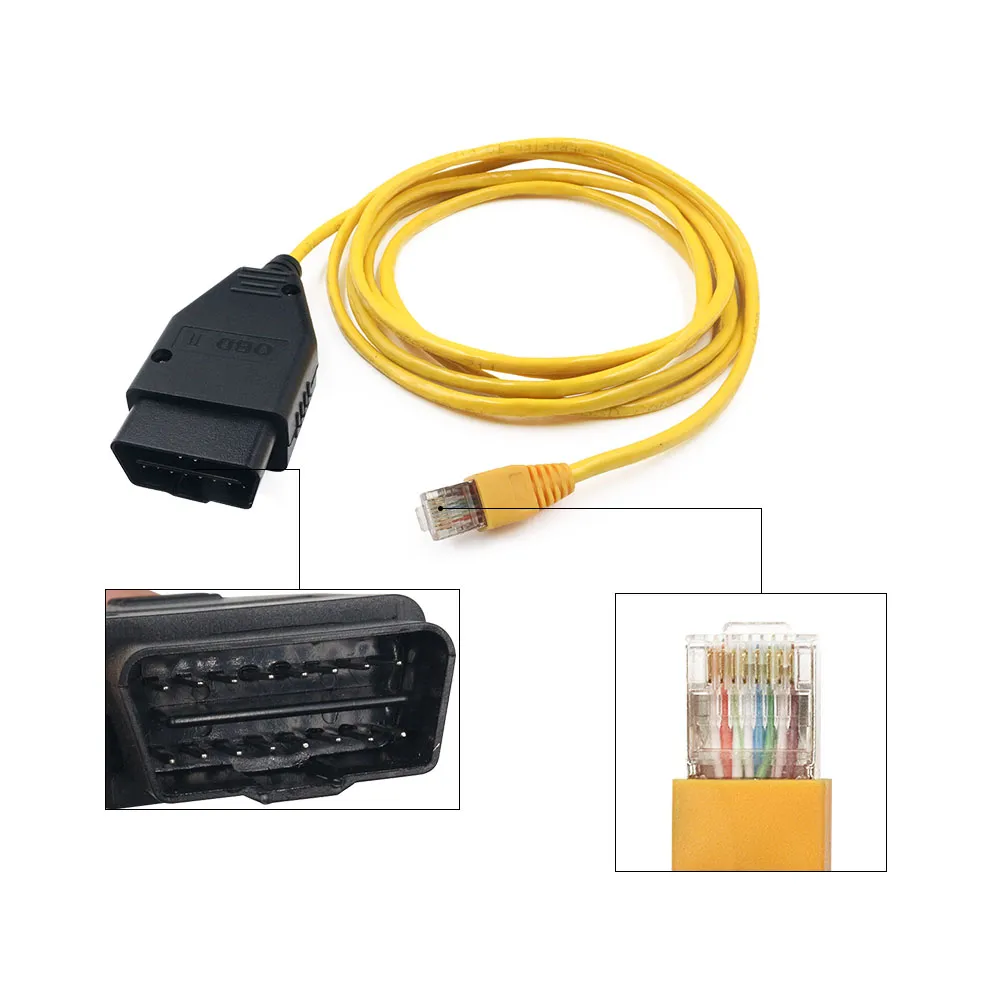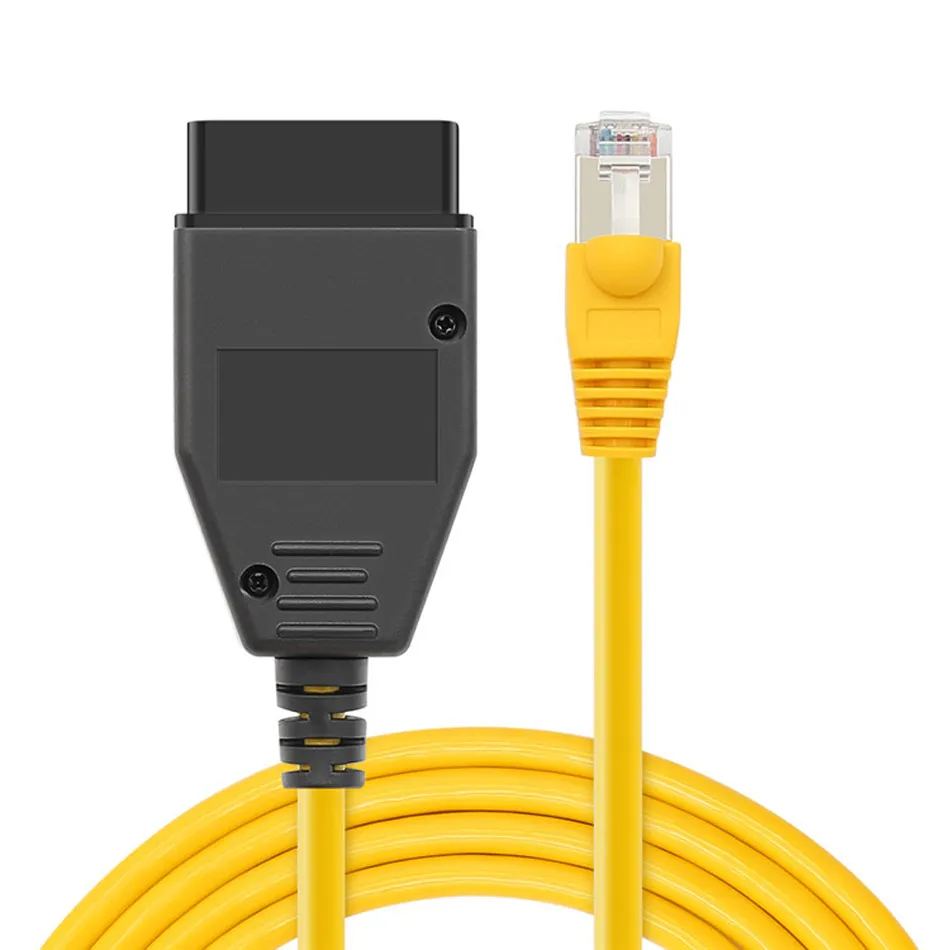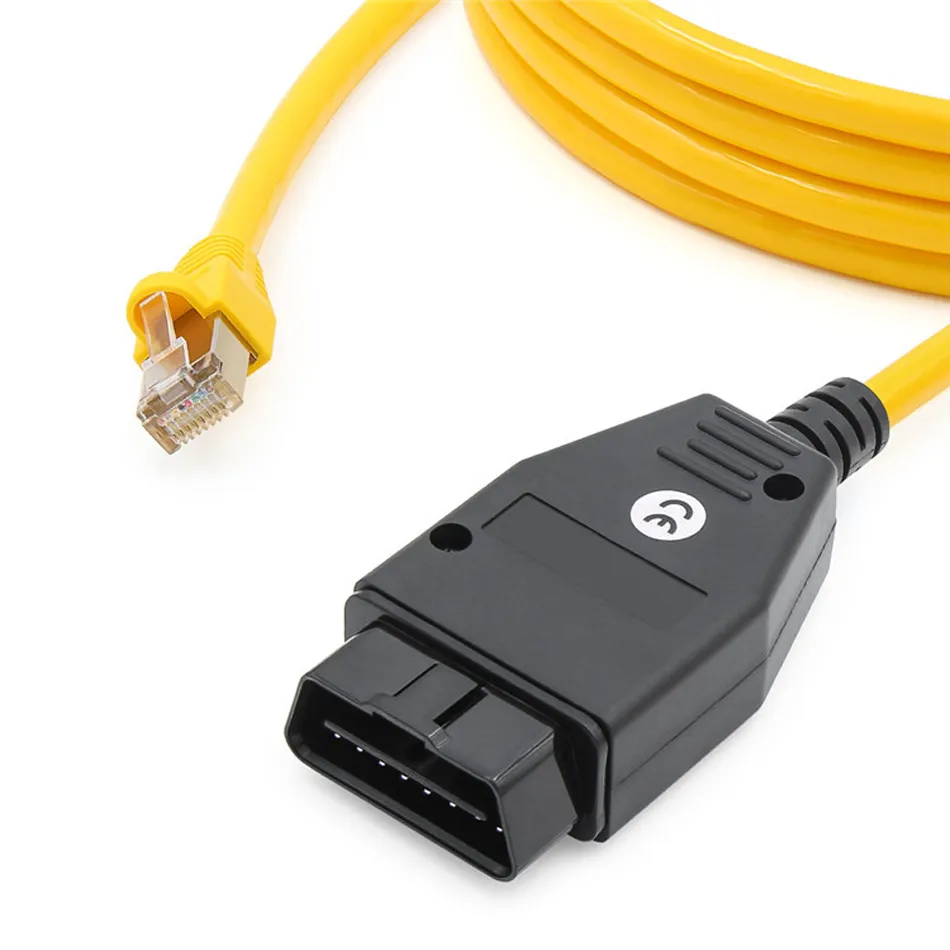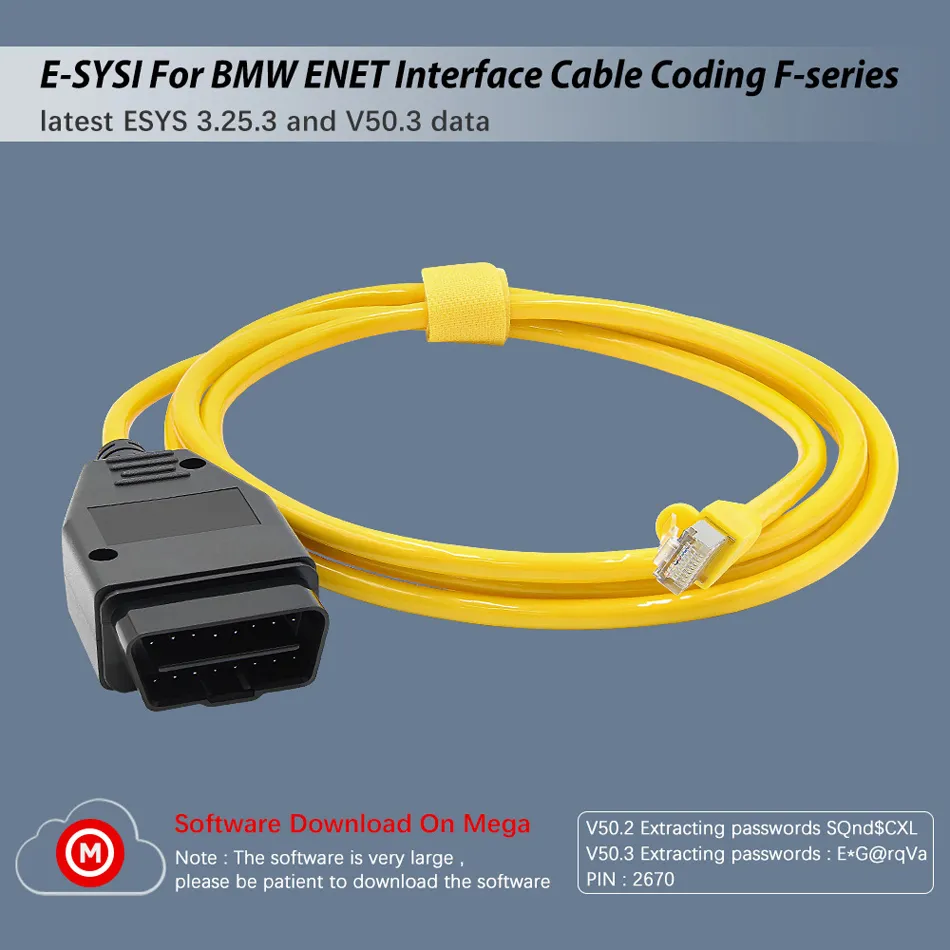If you own a BMW F-series vehicle, using an ENET cable can help diagnose issues with coding, programming, and software updates. Unlike traditional diagnostic tools such as OBD scanners, an ENET cable offers several advantages, including better compatibility with BMW F-series vehicles and the ability to access more in-depth diagnostic information. When choosing an ENET cable, it is essential to look for features like compatibility, durability, and ease of use. With its many benefits, an ENET cable is the ideal choice for anyone looking to diagnose problems with their BMW F-series vehicle quickly and accurately.









Benefits of using an ENET cable
An ENET cable is an essential tool for anyone looking to perform various coding, programming, and software updates on their BMW F-series vehicle. It is a type of cable that connects your computer or laptop to your car’s on-board diagnostic (OBD) port, allowing you to communicate with your car’s electronic control unit (ECU) directly. This means that you can easily diagnose various issues with your vehicle without having to take it to a garage or dealership.
One of the significant benefits of using an ENET cable is the ease of use. Unlike other diagnostic tools that require a steep learning curve, an ENET cable is easy to use. With the right software installed on your device, you can quickly get started. Additionally, an ENET cable is lightweight, portable, and convenient to carry around, making it an ideal tool for mechanics, DIY enthusiasts, and professional technicians.
Another benefit of using an ENET cable is its affordability. Unlike other diagnostic tools that may cost you a fortune, an ENET cable is relatively inexpensive. This makes it an excellent investment for those who are looking to save money while still enjoying the benefits of performing various repairs and upgrades on their BMW F-series vehicles by themselves.
Furthermore, using an ENET cable allows for quick and easy diagnosis of any issues with your vehicle’s ECU. This means that you can identify and fix problems before they become more serious, saving you time and money in the long run. For example, if your car’s engine light comes on, you can use an ENET cable to read the fault codes stored in the ECU, which will help you identify the problem immediately.
Comparison with other diagnostic tools
To start with, ENET cables are incredibly versatile and can be used for a wide range of vehicles. Unlike traditional diagnostic tools that are limited to specific brands and models, ENET cables can be used on almost all BMW F-series vehicles. This makes it a valuable asset for mechanics and car enthusiasts alike.
Another advantage of using an ENET cable is the speed at which it functions. Traditional diagnostic tools tend to take longer to read and analyze data from a vehicle’s onboard computer. On the other hand, an ENET cable allows for quicker and more efficient analysis, making it easier to diagnose and solve any issues with a vehicle.
In addition, ENET cables offer a broader range of customization options. They allow users to adjust various settings in their vehicle, including coding, programming, and diagnostics. This feature comes in handy when trying to customize your car’s performance and functionality to your liking.
ENET cables also tend to have a more user-friendly interface than traditional diagnostic tools. This makes it easier for novice mechanics to use and interpret data collected from the vehicle’s onboard computer. The interface is often more accessible, with more detailed explanations and instructions provided.
Furthermore, ENET cables save time and money. Since they are more efficient in diagnosing issues, they reduce the amount of time spent on repairs. They also give more accurate readings, helping to avoid costly and unnecessary repairs in the future.
Features of a good ENET cable
Compatibility is perhaps the most critical factor to consider when choosing an ENET cable. Not all cables are designed to work with every device or network setup. For example, if you’re setting up a gigabit Ethernet network, you’ll need a cable that supports speeds of at least 1Gbps. Similarly, some devices may require a specific type of ENET cable, such as a crossover cable, which is used for direct device-to-device connections. Therefore, it’s important to check the compatibility requirements of your devices to ensure that you choose a compatible ENET cable.
Durability is another crucial feature to look for in an ENET cable, especially if you plan on using it frequently or in harsh environments. Quality ENET cables are typically constructed with high-quality materials, such as thick shielding, gold-plated connectors, and durable casing, to withstand wear and tear. Additionally, cables with strain relief features, such as reinforced connectors or flexible sheathing, can help prevent damage from physical stress or bending.
Ease of use is also an essential factor to consider when choosing an ENET cable. The cable should be easy to plug in and remove from devices without requiring too much force or effort. Additionally, longer cables should be easy to manage and store, whether that means coiling them neatly or using cable ties to keep them organized. In some cases, flat or low-profile cables can be a great space-saving solution, especially if you need to run them under carpets or along walls.
Finally, price is always a consideration when buying any product, including ENET cables. While higher-priced cables may offer better quality or more features, they’re not always necessary for every situation. It’s best to assess your needs and budget before deciding on a cable. In general, mid-range cables tend to offer a good balance of affordability and performance, while premium cables may be worth the investment for professionals or demanding applications.
In conclusion, choosing the right ENET cable is crucial for building a reliable and efficient network. When selecting a cable, it’s important to consider factors such as compatibility, durability, ease of use, and price. By keeping these features in mind, you can make an informed decision that meets your specific needs and ensures optimal network performance.
FAQ
Q1. What is an ENET cable and how does it work with BMW F-Series vehicles?
The ENET cable is a diagnostic tool specifically designed to interface with BMW F-Series vehicles. It connects to the vehicle’s OBD-II port and allows for communication with the vehicle’s onboard computer system. This enables users to perform diagnostics, coding, and programming tasks on their BMW F-Series vehicles.
Q2. What are the advantages of using a precise and portable ENET cable for BMW F-Series vehicles?
Using an ENET cable offers several benefits, including the ability to access and modify advanced vehicle settings, perform in-depth diagnostics, and customize various features of the vehicle. The portability of the ENET cable makes it convenient for use in different locations, and its precision ensures accurate and reliable communication with the vehicle’s systems.
Q3. How can I ensure that the ENET cable is compatible with my BMW F-Series vehicle?
Before purchasing an ENET cable, it’s important to verify its compatibility with your specific BMW F-Series vehicle. This can be done by checking the manufacturer’s specifications and ensuring that the cable is designed for use with F-Series models. Additionally, it’s recommended to purchase the cable from a reputable supplier to guarantee its authenticity and performance.
Q4. Are there any precautions or considerations to keep in mind when using an ENET cable for BMW F-Series vehicles?
When using an ENET cable, it’s essential to follow proper guidelines and precautions to avoid any potential issues. This includes ensuring that the vehicle’s battery is sufficiently charged, using the cable in a stable and safe environment, and following the manufacturer’s instructions for diagnostics, coding, and programming tasks. Additionally, it’s important to use the ENET cable responsibly and only make modifications that are within legal and ethical boundaries.